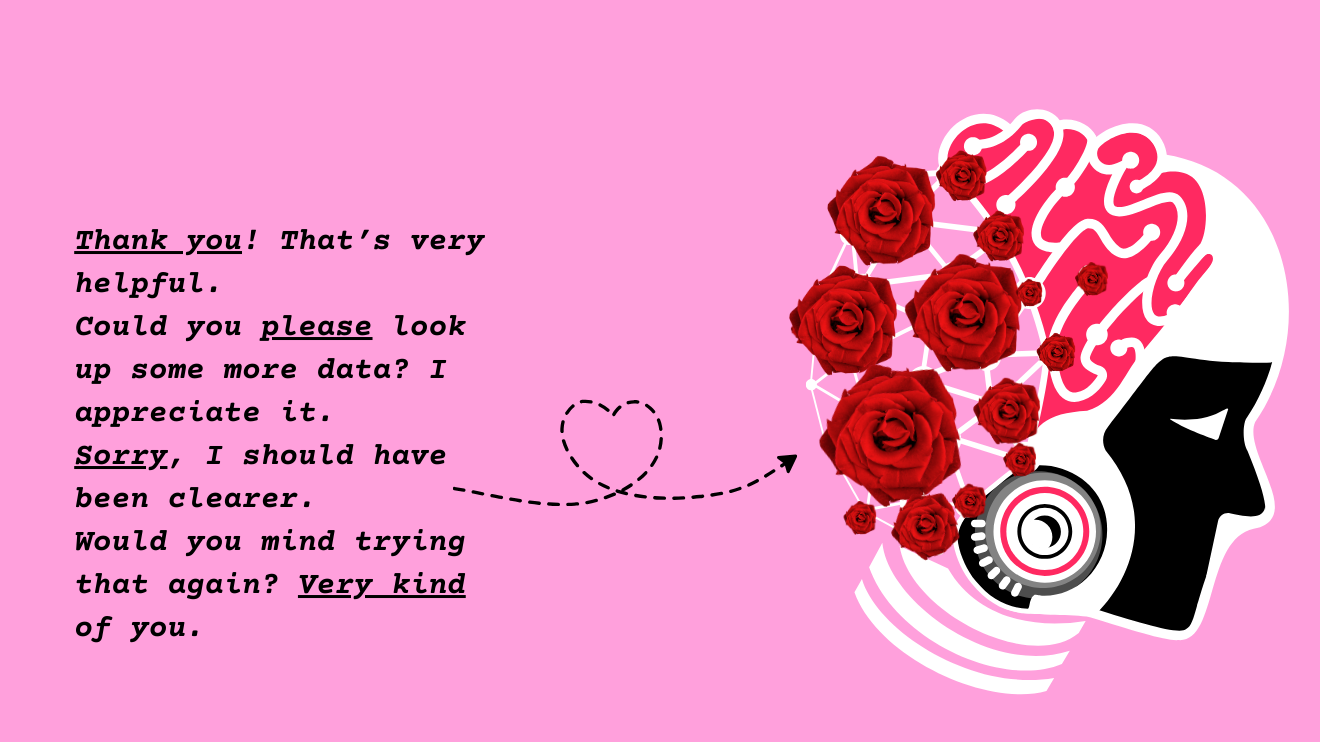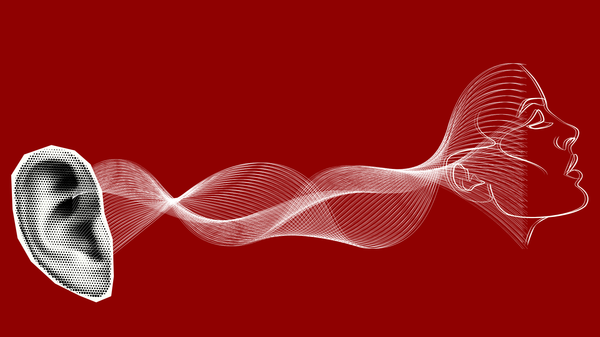BIG READ: Therapy must stop being too nice - especially in the age of AI
'Comfort' and 'validation' are critical concepts in therapy but they must have their limits, or they might degenerate into the kind of sycophancy AI bots are accused of.

The quality of the working alliance, or therapeutic alliance, between the therapist and the patient is the single most important determinant of the outcome of therapy. The problem begins when therapists start to believe that the working alliance simply means "we connect, we get along, we like each other, we feel good about each other."
A working alliance has to be built around a shared understanding of the actual work both parties have joined together for. It cannot be about the therapist and the patient's mutual love of sports, fishing, or Taylor Swift concerts.
That's not me. That's psychologist and author Jonathan Shedler, who has written scores of research articles and relentlessly advocated for deep, slow therapy instead of the "get well in 8 sessions!" assembly line version peddled by insurance companies and newfangled mental health startups. He is also the creator of the Shedler-Westen Assessment Procedure (SWAP) for personality diagnosis and clinical case formulation and co-author of the Psychodynamic Diagnostic Manual, and has more than 25 years of experience teaching and supervising psychologists, psychiatrists, and psychoanalysts.
In Shedler's telling, the working alliance rests on three pillars:
- Mutual connection – they should be mutually invested enough in the process of therapy that they want to continue meeting.
- Mutual agreement about the purpose of the work – psychological change in the patient.
- Mutual understanding about the methods that are going to be used.
For patients, it is crucial to understand that good therapy is not about whether you like the therapist as a person, whether they understand you, or you feel comfortable with them. They may all be factors, but ultimately success in therapy comes down to whether you both are on the vital same page about what you are here to accomplish and how.
Shedler is particularly horrified by the therapist who becomes their patient's pal. "There is NO bona fide therapy modality where a therapist acts like a paid friend, agrees [with] everything the patient says, diagnoses their friends & family members [with] personality disorders, or tells the [patient] what life decisions they should make," he says. "This is simply not psychotherapy."
As someone whose life was saved by Shedler's definition of 'good therapy', whenever I re-read those words, they remind me eerily of what artificial intelligence is being accused of: sycophancy. Remember the time when ChatGPT reportedly told one person that their plan to sell 'shit on a stick' was 'not just smart — it’s genius'?
Against all odds, Sanity is turning 5 this year.
My work is 100% free and independent and kept alive by your support. Please contribute what you can to help me keep the lights on.
Support me from India
Or from elsewhere in the world
Therapy and companionship have emerged as the number 1 use case for generative AI chat bots in 2025. While some of this could reflect actual succour people feel they are receiving from talking to the machines as well as how expensive human therapy is, you have to wonder whether AI's propensity to butter us up has contributed to its rise as a 'trusted friend'. Who doesn't like having someone/something in their life that makes them feel warm and fuzzy, always like the victim, and never the one responsible for anything?
AI models are designed to generate outputs that humans would approve. A popular technique for training high-quality AI assistants is reinforcement learning from human feedback (RLHF). According to a 2023 paper by Anthropic, the maker of the popular AI bot Claude, "RLHF may also encourage model responses that match user beliefs over truthful responses, a behavior known as sycophancy. We investigate the prevalence of sycophancy in RLHF-trained models and whether human preference judgments are responsible. We first demonstrate that five state-of-the-art AI assistants consistently exhibit sycophancy behavior across four varied free-form text-generation tasks. To understand if human preferences drive this broadly observed behavior of RLHF models, we analyze existing human preference data. We find that when a response matches a user’s views, it is more likely to be preferred. Moreover, both humans and preference models (PMs) prefer convincingly-written sycophantic responses over correct ones a non-negligible fraction of the time. Optimizing model outputs against PMs also sometimes sacrifices truthfulness in favor of sycophancy. Overall, our results indicate that sycophancy is a general behavior of RLHF models, likely driven in part by human preference judgments favoring sycophantic responses."
Source: Towards Understanding Sycophancy in Language Models
In a previous piece, I had argued that therapy's much vaunted human touch, which was supposed to be its moat against AI 'therapy', is under attack. Some users simply don't care for it anymore because AI has become extremely good at mimicking human language and empathy. For therapy to retain its differentiation and competitiveness, it needs to decouple itself from AI's need to please its master and double down on what makes it genuinely effective: the presence of a skilled human professional willing to ask difficult questions with unwavering loyalty to the working alliance rather than simply agree with everything the patient says.
This means confronting one of therapy's great and often hushed-up undersides: its risk of mutating into friendship, in Shedler's words, supplying an 'all-good, all-nurturing caretaker' such that the relationship feels warm and supportive, and yet failing to do the hard, uncomfortable work where real change begins.
Worse, it can metastatise into an egregious violation of boundaries. In one Belgian survey from 2022, over 70% of therapists reported being emotionally involved with their clients or experiencing sexual feelings and fantasies about them. Most such therapists were men. Older therapists more often behaved informally and started friendships with former clients compared to their younger colleagues.
While transference and countertransference are inherent to therapy, potentially leading to intense feelings between therapists and patients, professionals are supposed to be trained to defend against these feelings to preserve the sanctity of the therapeutic alliance.
When that defence breaks down, you don't get therapy. In the worst case, you get serious abuse of power by the therapist. And in the best case, you get a friendship-on-call service where you can enact your fantasies unchallenged.
You might as well vibe code your own bot buddy for that pleasure. AI companions are already letting teenagers and even children use them for everything from connection to romantic role-play. The lines aren't blurry anymore. They don't exist.

Read this piece and the discussion in the comments section to understand the nuances of AI and sycophancy
A brief history of validation (in) therapy
According to positive psychology, validation in therapy involves acknowledging and empathising with a client's feelings and experiences, even if you don't always agree with them, fostering trust and connection. It is an especially critical component in helping people from marginalised populations, who may have been harmed by over-pathologisation of their distress caused by systemic and structural issues.
A therapist who knows their job will validate a patient's feelings but not always their behaviour. For example, my therapist may validate my flights of paranoia around travel while pushing back on whether avoiding such stressful situations is helping me feel less scared or only deepening my phobias. The therapist of a person who has experienced workplace discrimination and therefore wants to avoid job interviews may acknowledge the short-term comfort of the avoidance while encouraging the person to consider its long-term costs.
It's a delicate dance.
According to some accounts, the roots of validation in therapy date back to Carl Rogers's person-centred therapy from the 1940s and 50s, with its focus on 'unconditional positive regard' for the patient that was a radical departure from the dominant behavioural and psychoanalytic frameworks of the time. It was in 1972 that 'validation' as a distinct mode of therapy was first examined in a pilot study on patients with dementia led by Naomi Feil:
"I used humanistic philosophy as a theoretical basis for validation. 'Each human being is different and valuable, no matter how disoriented .... People who are disoriented, who cannot return to the outside community, deserve to resolve the past and justify their past roles in very old age. The worker's mission is to help them reach their goals.'"
"To achieve empathy, the validation worker follows these humanistic principles:
1. Accept the client or patient without judgment.
2. The worker cannot give insight or change behaviors if the client or patient is not ready or willing to change.
3. Know your client or patient as a unique individual.
4. Feelings that are expressed, acknowledged, and validated by a trusted listener will lessen.
5. Feelings that are ignored will gain strength.
6. Each stage of life has a unique task that we must face.
7. Failure to face that life task leads to psychologic problems.
8. Empathy builds trust, reduces anxiety, and restores dignity."
Feil said validation therapy recipients showed an increase in positive affect and decrease in negative affect after 6 months of sessions held once a week. For instance, they initiated eye contact, assumed well-established social roles, and began to help one another solve universal human problems such as loneliness, loss of home, job, family, and mobility. The study group cried less and paced less, resulting in less need for restraints.
Validation therapy has since been criticised for lacking scientific rigour. But validation as a therapeutic tenet has remained a powerful ingredient of other modalities, such as dialectical behaviour therapy and trauma-informed therapy.
People like us
To be sure, offering validation to a patient who may never have received any – or may have had their sense of self-worth destroyed by oppressive and traumatic life events – with the goal of strengthening their self-perception is different from performative validation by a therapist who struggles to show up if not as a friend to their patient.
Validation cannot confuse the boundary between therapy and comradeship. Between focus on the patient's inner growth while acknowledging a broken world and difficult interpersonal relationships, versus an activist-style critique of these external forces without helping the patient strive towards inner growth.
This links up with a thorny ideological issue: Is therapy culture becoming too explicitly orientated to serve a particular kind of discourse?
In the US, conservatives are reportedly significantly less likely to seek out therapy. One reason is perceived bias against them: Research published in Behavioral and Brain Sciences found that "mental health professionals are more politically liberal than the general population. In our survey of over 800 mental health professionals, 68 percent identified as liberal or very liberal, compared to 26 percent moderate and only 6 percent conservative."
More research in other cultural contexts is needed to bear out these numbers, but it is worth asking whether the zeitgeist around therapy, especially as seen on social media, pushes away those we readily label as 'bigots'. This is not a value judgment on individuals. This is to ask whether the all-important working alliance can withstand the pressures of polarisation.
The worry is, any exclusivist construct of validation and empathy could deliver those who feel alienated, isolated, and judged straight into the hands of untested, unscrupulous AI that has no such 'bias', with disastrous results. Young people are particularly vulnerable to this form of non-therapy.
Like fake news, fake therapy – both human- and machine-led – has a symbiotic relationship with polarisation and loneliness. Validation can be an antidote to this. But it can turn problematic when divorced from ethics and therapeutic principles, or used as a hollow reward for the 'good' patient and a toothless proxy for the complex work of therapy. In resisting the urge to be too nice lies therapy's best chance of beating back the sycophantic machines.

Watch this masterclass on the ethics and principles of therapy content on social media







